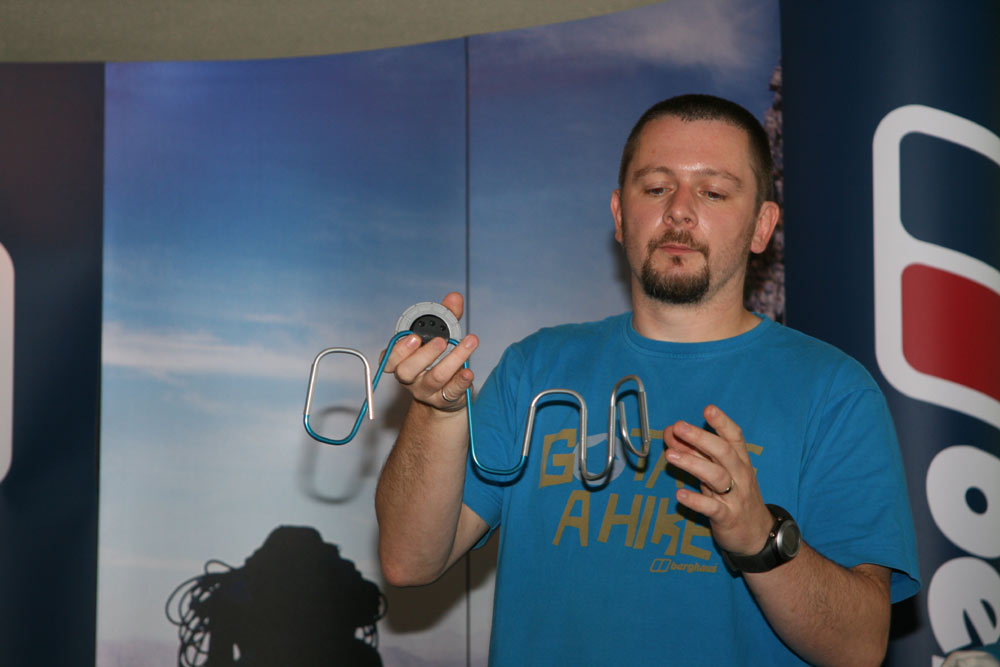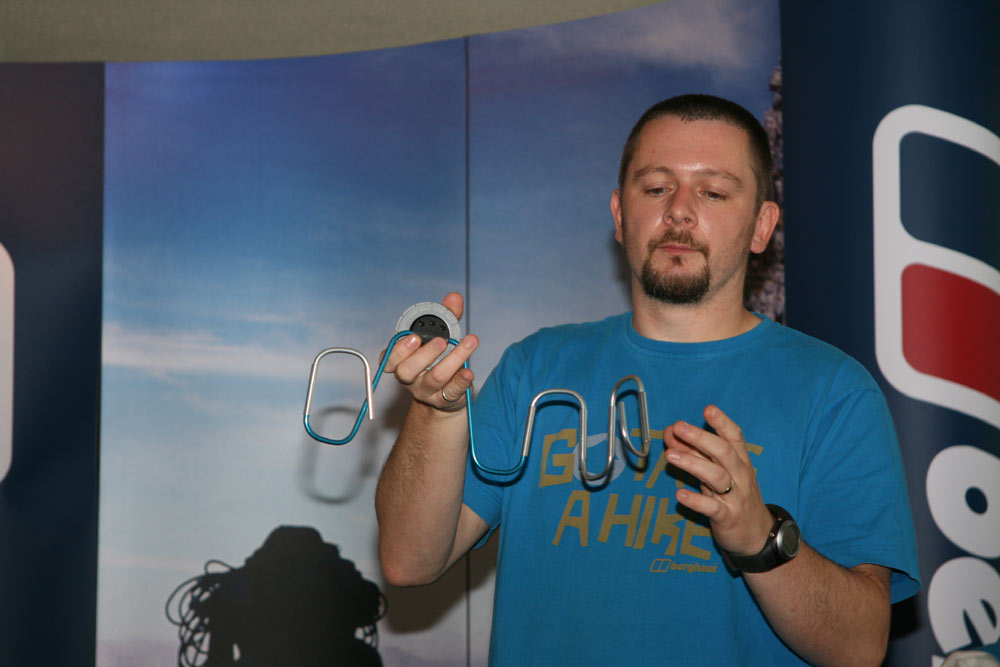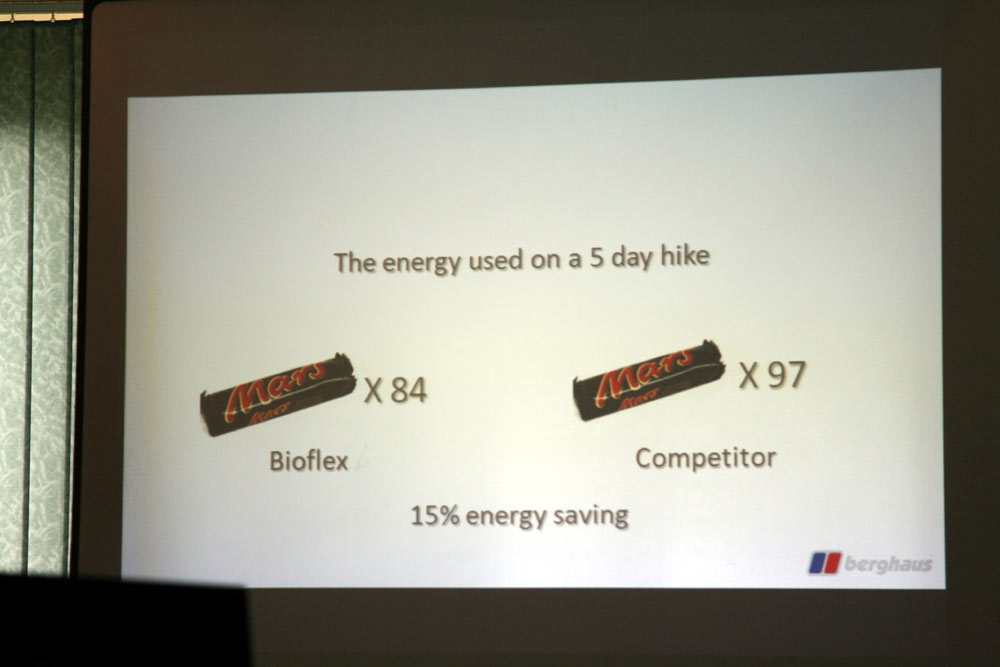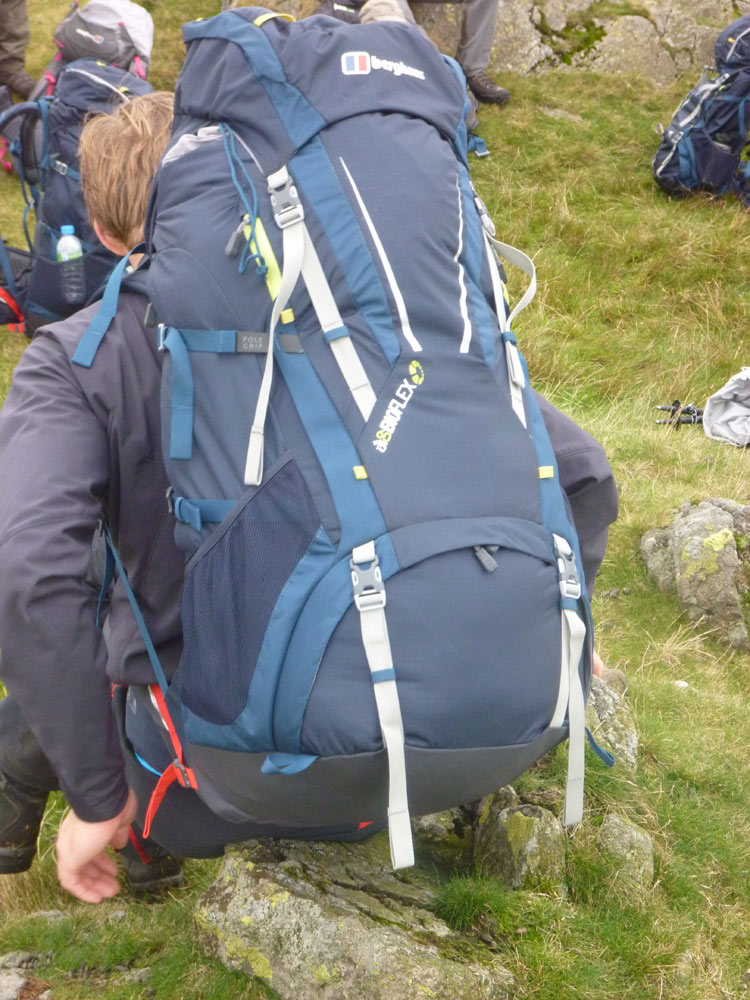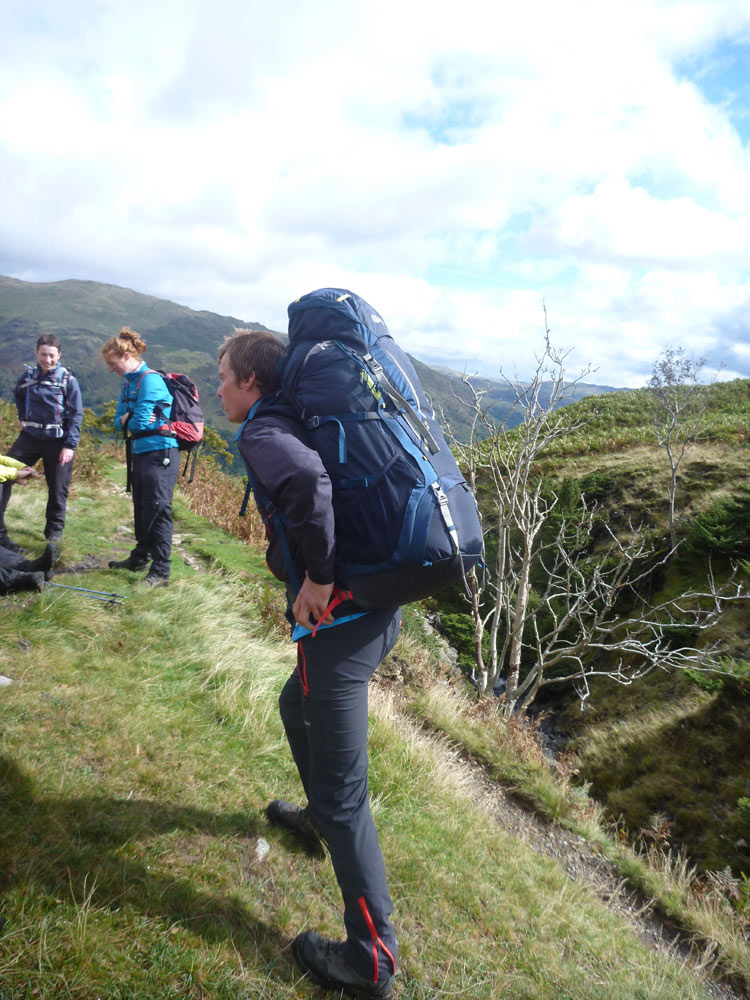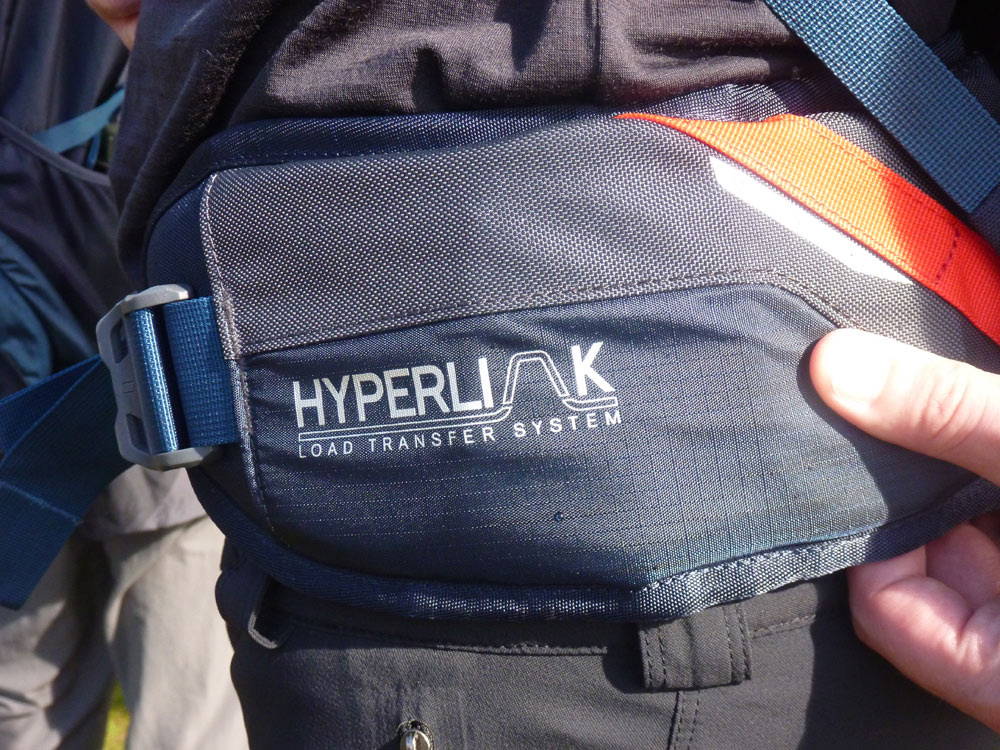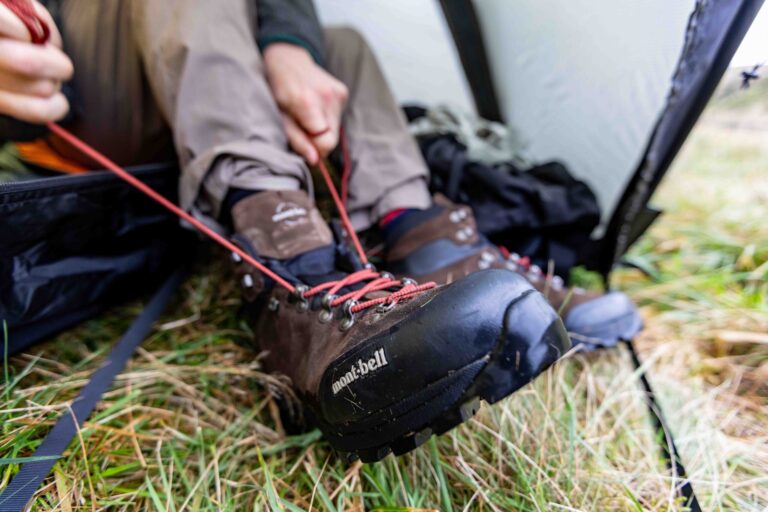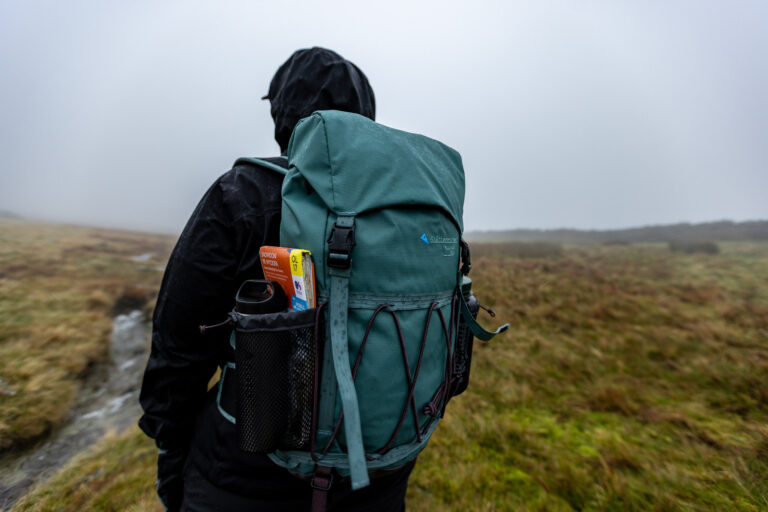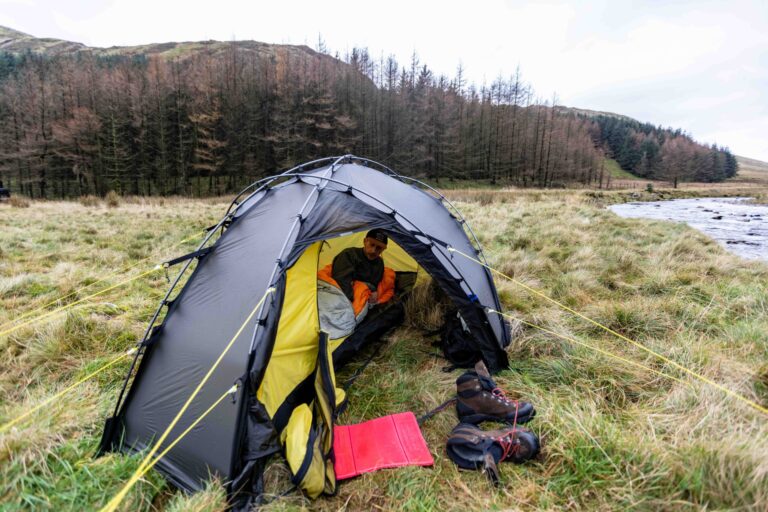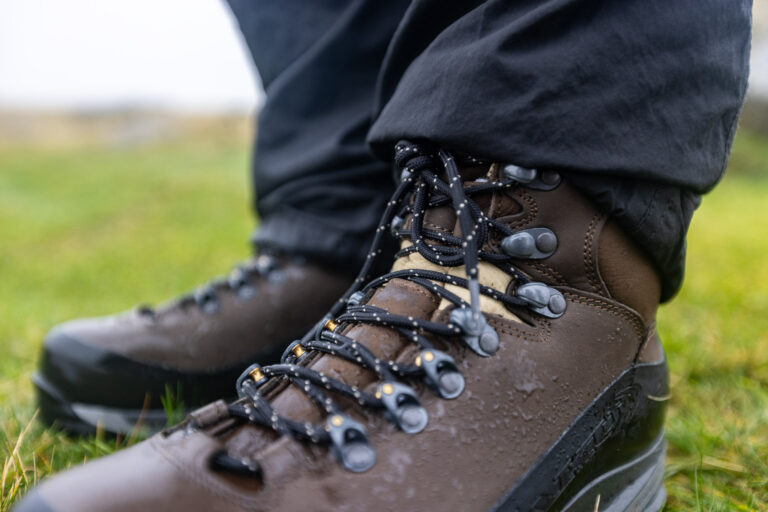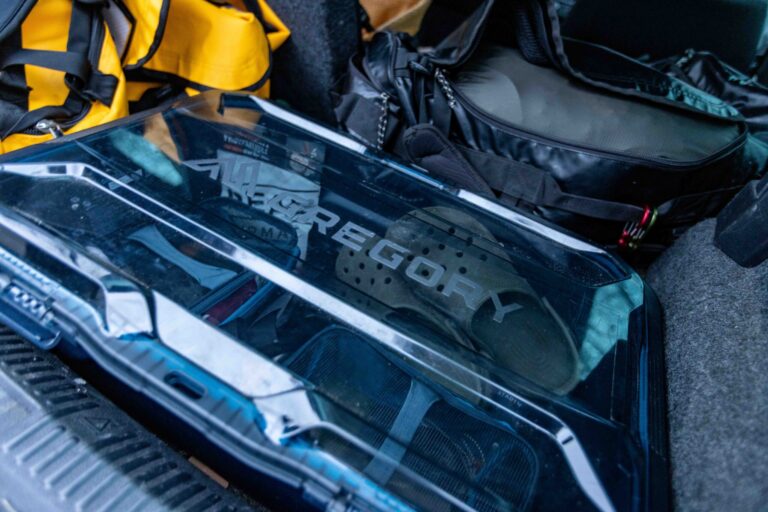We are trying the Berghaus Bioflex 2 pack system for the first time. It feels as if I’m floating across the rocky Lakes terrain, moving with fluid grace, skimming effortlessly up steep slopes, it is as if my pack weighs around 15 kilos less than it does.
Oh, hang on, it does weigh 15 kilos less. The whopping great 65-litre pack I’ve been toting around above Langdale is now on the back of Berghaus-sponsored climber Leo Houlding and I am, in fact, carrying a small and very light alpine day pack destined to appear in autumn 2012.
But that’s another story altogether. The hot news from Berghaus’s media launch in the Lakes this week was the complete revamp of the old pivoting Bioflex pack system to produce Bioflex 2, a lighter, more compact and visually more robust take on the same concept.
Fewer Mars Bars Per Day…
The idea is that by creating a back system that moves with your body as you walk, you more efficiently and more freely. Literally. To demonstrate the former, Berghaus had a selected the classic unit of walking efficiency, the Mars Bar…
Lab tests, where they measured energy use on a treadmill and compared Bioflex packs with ‘the competition’ revealed that over a six-hour trek, you could potentially eat three and a half fewer Mars Bars with Bioflex than when using the least efficient of its rivals based on identical total loads – the new system is also the lightest in its class.
What’s Changed?
If you’re familiar with ‘Original Bioflex’ you’ll recall that it’s a bulky, plasticky sort of thing that moves and works, but looks off-puttingly messy and, let’s be honest, less than robust.
In contrast, new Bioflex is a minimalist, simple, honed affair. It has three major parts: the Hub, an alloy machined thing that’s attached direct to the hip-belt and pivots along two axes, both laterally and front to back so it can move with the sway of your hips – Shakira would love these – and also if you bend forwards of back.
And because it mounts directly to the hip-belt, loads are transferred directly into the belt for efficiency. Then, on the larger packs, there’s a semi-flexible space frame made from DAC alloy tent pole tubing that feeds direct into the hub.
Finally, the hip-belt too has been redesigned. ‘Hyperlink’ may sounds like an express train service, but it’s actually more inter-linked alloy tubing that curves gracefully around the hips, but resists deformation from heavy loads pressing down on the belt. See the images for a better idea of what the hell we’re talking about…
Anyway, the end result is alleged to be a pack that simply works more efficiently and, as a bonus, will dramatically slash your spending on Mars Bars and other confectionary.
So efficient is it, that that evening, Berghaus was able to select a restaurant offering special, miniaturised portions, secure in the knowledge that we simply wouldn’t need extra calories for next day’s hill outing…
Field Testing…
Next day we got to use a selection of Bioflex 2 packs for real on a walk above Elterwater in Langdale. After an initial rapid back-length adjustment, it was off, out and onto the fells with kit-testing legend, Ken Ledward and Berghaus staff plus Leo Houlding.
We’ve used Bioflex and other pivoting hip-belt sytems before, so we had a good idea of what to expect, but we were still impressed by the fluid movement of the hip-belt at a standstill. That hub, with its lubricated pivot, really does move freely.
Hips Don’t Lie…
You can do your best ‘Hips Don’t Lie’ moves pretty much unhindered by the pack – in contrast to traditional big packs which tend to splint you in position you get much more natural movement.
On mountain terrain, you notice the difference most obviously on steeper ground where you’re shifting weight more obviously sideways and sometimes having to take higher steps than normal. The pivoting belt makes a real difference here, ditto if you find yourself crossing boggy ground by hopping from rock to rock.
In short, you just feel like your moving far more naturally than you’d expect with a large pack on. We weren’t carrying a really huge load, but the pack was weighted and we added a day sac on top of that, so it wasn’t light by any means.
The most vivid illustration of the benefits are that when we did swap to that lightweight technical day pack, that we’re not allowed to talk about in detail, we didn’t really feel any more free in movement than with the Bioflex pack.
Big Loads…
What we can’t really tell you is much about how the pack would work with a really big multi-day backpacking or expedition climbing load – big kilos shifting about can be disconcerting on broken ground, but you can always lock the pack off if needed. For the same reason, we can’t tell you much about hip-belt distortion, but it seemed generally stable and comfortable.
What we did feel was that the lumbar pad was a little firm – bear in mind these are prototypes, not full production packs – and not quite angled right for the editorial butt-shelf © but obviously, that may well change for production and different folk suit different shapes.
All in all, we were quietly impressed with Bioflex 2. It seems to allow easier movement with effective load transfer to that high-tec hip-belt without creating any instability. We managed some balletic bog rock hopping without any issues or swaying about.
Mars Bar Consumption Figures…
We also singularly failed to consume any Mars Bars at all, though after-walk cake went down a treat. The new Bioflex 2 packs will be in the shops from early 2012 ranging from a 45-litre weekend-packing sac through to a serious 90-litre monster for wilderness multi-day trips and expeditions. Pricing is at the premium end of the market as you might expect and features increase as capacity goes up.
The smaller packs only get the pivoting hub, medium feature hub and link hip-belt, while the biggies get the space frame too. Don’t write the idea off for smaller packs, there are still benefits to be had, though the 35-litre version isn’t going into production.
Big thanks to Berghaus for an interesting and entertaining couple of days. More brand info at www.berghaus.com – new autumn 2011 range appearing there now.

